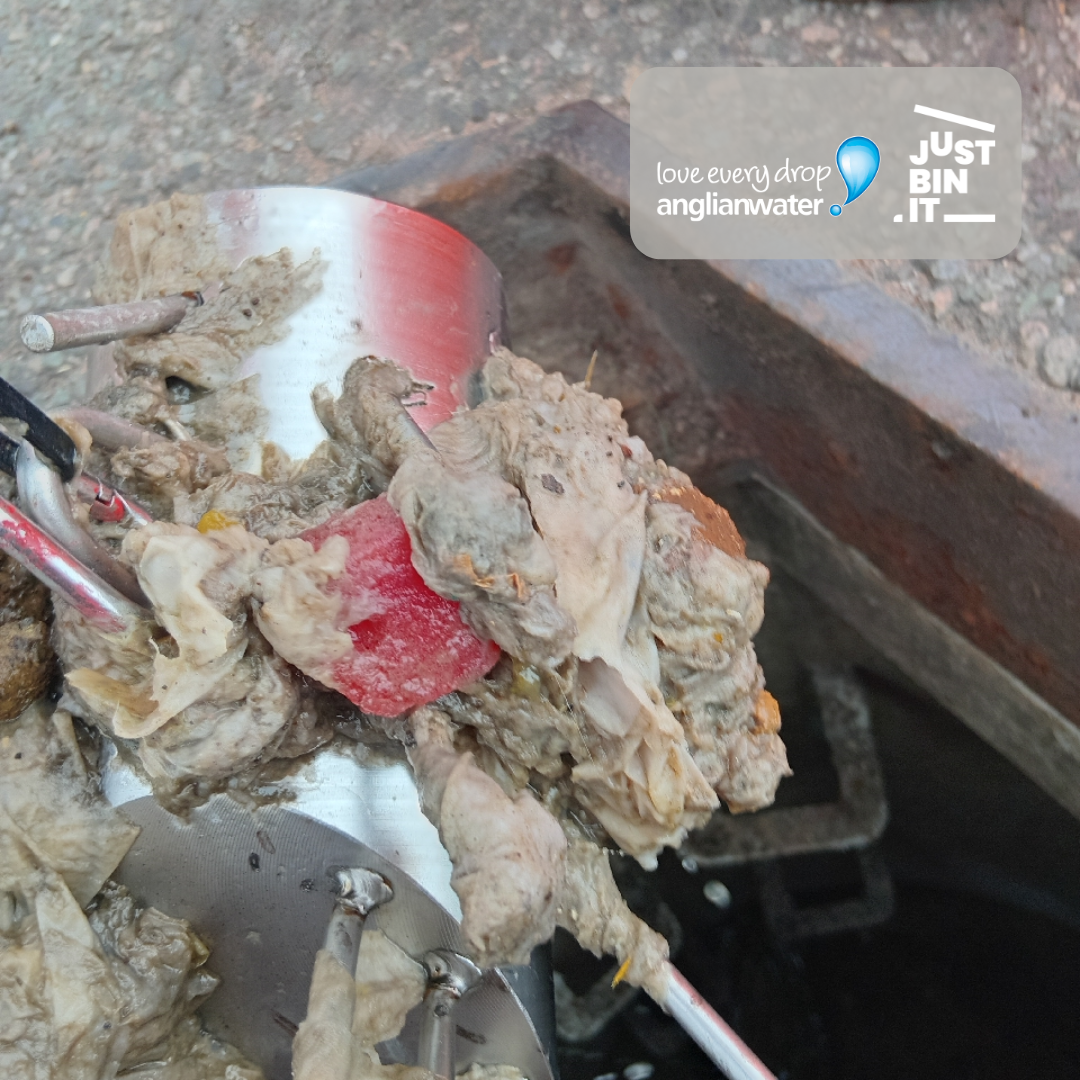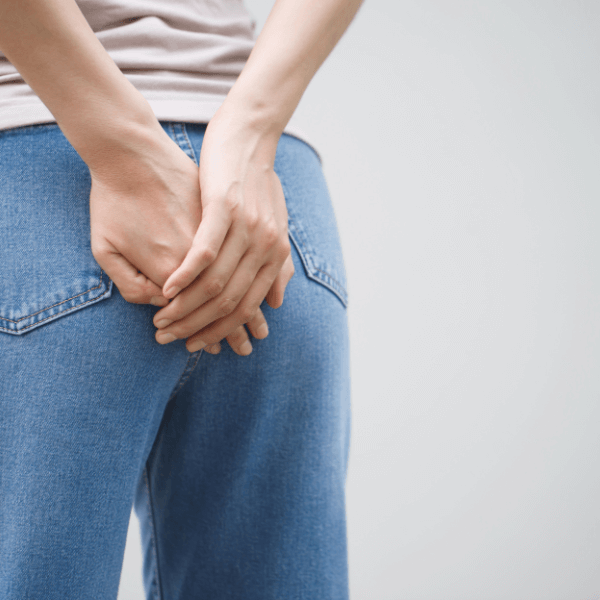The Bristol Stool Chart: Your Guide to Understanding Stool Types & Digestive Health

The Bristol Stool Chart: Your Guide to Understanding Stool Types & Digestive Health
You’ve finished your business, and as you look down before you flush, a question raises to the surface of your brain, “what should my poop actually look like?”
Seems like a silly question at first – after all, we poop every day! However, just because we do something a lot, doesn’t mean we’re 100% clued up on the ins and (sometimes smelly) outs of it.
Research says that a third of Brits don’t check the paper or their poo after doing their business. That’s a whole load of people who don’t know what’s going on in their guts! It’s time for us to be confident that what comes out of us is healthy and to do that, we need to scrub up on what it should look like and actually CHECK OUR POO.
Luckily, someone’s already thought about this, and they named it The Bristol Stool chart. In case you were wondering, no, their last name wasn’t Bristol, and they didn’t just have a crappy weekend in Bristol. Anyway, they’ve done us (and our bottoms) all a favour by laying out the different type of poops and what they mean.
What is the Bristol Stool Chart?
What is it and where did it come from?
The Bristol Stool Chart was developed by Dr. Ken Heaton and Dr. Stephen Lewis at the University of Bristol and Bristol Royal Infirmary. They put their noggins together and first published it in 1997. The chart is a diagnostic tool that categorises stool types to help identify gastrointestinal issues or food sensitivities. Pretty neat stuff!
Why it matters for bowel health
Our body talks to us through poo. No, seriously. Countless bowel health conditions are identified through a change in bowel habits, along with other symptoms. Irritable bowel syndrome (IBS), inflammatory bowel disease (IBD) and even bowel cancer can cause consistent changes in our bowel habits, so it’s important to scrub up on our back-alley knowledge.
The Bristol Stool Chart can help people and health professionals understand what someone’s normal is, thus making it easier to identify when someone’s bowel habits have changed dramatically. With the Bristol Stool Chart, anyone can understand what’s going on in their body, and what they poop is telling them.
How to Use the Bristol Stool Chart
Visual guide
Below you’ll find an infographic of the Bristol Stool Chart. To use it, all you need to do is drop trou, do your business, and take a peek into the bowl before you flush. You can then relate it back to any of the images on the chart to see if your stool is in good shape or not.

Breaking Down the 7 Stool Types
Type 1 & Type 2 - Constipation
If your poop looks like separate hard lumps, or lumpy and sausage like, maybe it’s hard or slightly uncomfortable to pass, you’re likely constipated. If you're looking for ways to improve constipation, read our article on natural stool softeners.
Type 3 & Type 4 - Ideal/normal stool
Does your stool look like a smooth sausage, or a sausage with some small cracks in it? Well done! You’ve got the perfect poop! Even if you feel like your poop is soft and a little messy, that’s fine too, if it holds that lovely sausage shape, you’re all good.
Type 5 – Soft blobs (borderline)
If you’re seeing soft blobs with clear cut edges, you should be okay. What this could mean is that you’re just lacking a little bit of fibre. This is easily fixed by adding more wholemeal products, nuts, seeds, legumes, fruit and veg into your diet. Try that out and see if you can firm things up a little.
Type 6 & Type 7 – Diarrhoea & loose stool
So, you’ve found yourself with mushy poop, or maybe it’s just straight up liquid. Sucks, doesn’t it? If you’re experiencing this for a day or two, it’s nothing to worry about. This could just be something you’ve eaten, or countless other environmental factors. However, if you notice a type 6 or 7 for more than 3 weeks straight, it’s time to chat to a health professional. Don’t worry, they’ve heard it all before, so there’s nothing to be embarrassed about!
What’s Considered Normal?
Frequency vs. Form and consistency
When it comes to frequency, the normal number of times to poop in a day/week is varied. Physiotherapist and Pelvic Floor Specialist, Lucy Allen notes that “the way that we look at it is that anything from three times a day to three times a week is classed as normal” when it comes to emptying your bowels. And more or less than this for a prolonged period would be considered outside of the norm.
When it comes to the consistency, we’re looking for a number 3 or 4, smooth or slightly cracked sausage-like shapes that are easy and comfortable to pass. That’s the ideal poop.
Signs of healthy bowel function
A healthy bowel movement could look different for everyone. The main thing to look for is that your poop is easy to pass, doesn’t hurt or feel uncomfortable, and it feels like you’re fully emptying your bowels when you use the toilet. Other than that, our poop and bowel habits can vary based on what we eat, whether we’re travelling, and whether we’re out of our usual routine too. It’s about knowing what’s normal for you, and knowing what to do when you notice things change.
Allen touches on the subject by saying, “The most important thing is that when you do have a poo, it feels satisfying, it feels complete, and it feels good. That's kind of what we're looking for. So, if you're not going every day, don't panic, as long as when you do go it feels good.”
When Your Stool Signals a Problem
Constipation symptoms & causes
Constipation can be caused by a whole host of things! Whether it’s dietary, due to a condition, or down to our environment. Here’s a few causes:
-
Dietary: If we don’t get enough fibre, or enough water, we end up getting blocked up. The fibre keeps our poop from breaking down on the motorway, and the water keeps traffic flowing smoothly so we don’t end up in a bottleneck.
-
Health conditions: Conditions like IBS, IBD, or Bowel Cancer can have an impact on our bowel movements. This can cause constipation, and if it goes unnoticed for long enough, faecal impaction could occur.
-
Medication: Pain medication, or those used for depression and anxiety can cause a change in bowel habits like constipation. It’s always great to check with your doctor if this could be a side effect before you start to worry.
-
Lack of physical activity: Living a sedentary lifestyle can mean that we don’t move our bodies as much, which is vital for healthy digestion. This can bring things in our bowels into a sedentary lifestyle too, causing constipation.
-
Environment and routine: When we’re taken out of our usual routine (on holiday, at the office, travelling, camping etc.) it can throw a spanner in the works, and send our bowels on a stubborn streak, making it harder to pass what we need to when we need to.
Diarrhoea symptoms & causes
-
Infections & viruses: Viruses like the flu, or gastroenteritis can cause bouts of diarrhoea, which should improve as you start to get better. This is your body’s response to flushing out all the nasties inside of you. Not quite ideal, eh!
-
Medications: Antibiotics and laxatives can mess with your gut in different ways, but both can cause diarrhoea. When experiencing this, probiotics and the BRAT Diet (Bananas, rice, applesauce and toast) can help to alleviate the symptoms.
-
Health conditions: Conditions like IBS, IBD, or Bowel Cancer can have an impact on our bowel movements. This can cause constipation, and if it goes unnoticed for long enough, faecal impaction could occur.
-
Allergies and intolerances: Dietary intolerances and diseases can cause loose bowels whenever trigger foods are encountered. Avoid known trigger foods to prevent diarrhoea.
Tips to Improve Bowel Health
Diet & fibre intake
If you want to get those super smooth, sausage-like poops, you’ll have to put the work in. In the UK, we rarely hit our recommended fibre intake of 30g a day. But it’s not just about the amount of fibre we eat; it’s about the type too. We should be getting a good mix of soluble fibre (which helps bond our poop together) and insoluble fibre (which bulks our poop up and feeds our microbes). If we’re doing this, we can’t go too wrong with diet.
Hydration & physical activity
Water works as a lubricant for our gut, helping things slither and slide through smoothly. The fibre we eat also needs water, as soluble fibre absorbs it, turning it into a gel-like consistency, ready to slip and slide through the gut. It’s recommended that we drink 6-8 cups of water a day to take full advantage of its benefits and prevent constipation.
When to consult a healthcare professional
If you’ve been experiencing constipation, diarrhoea, or any dramatic change in bowel habits for longer than 3 weeks, it’s a good idea to chat to a healthcare professional. However, we can’t know if things are changing if we’re not checking our poop and understanding what’s normal for us!
It’s also worth noting that if you notice a red colour in your stool, or blood in the toilet bowl for longer than 3 weeks, that’s a good time to talk to a doctor too. Rest assured, there’s no need to panic, these things are usually harmless, but only good can come from getting things checked out.
Keep an eye on what comes out
Turns out, the stuff we usually try to forget about after flushing can actually tell us quite a lot. By using the Bristol Stool Chart, we’re not just checking for laughs or curiosity; we’re giving ourselves a quick daily insight into how well our gut’s doing its job.
Understanding the difference between what’s normal and what might need attention can help spot issues early and keep your digestive health ticking along nicely. If anything feels off, changes stick around, or you just want a bit of reassurance, then speaking to a healthcare professional is always a smart move.
So next time you go, take a second look. Your poop might just have something important to say.



Spot on! More information the better we are to getting better health benefits
From eating the right foods. Again thank you. Your product is amazing, I just decanted from large bottle to handbag size. Lovely and soothing in the right areas
Thank you soooo much for this information. I think it’s wonderful as is all the info I receive in your e-mails. I wish everyone could read them!
Excellent article, very informative with just enough humour to give it impact. I found it very helpful.